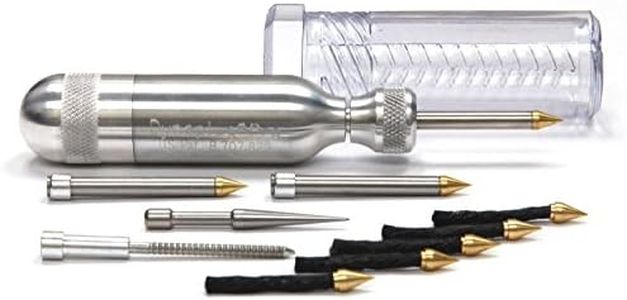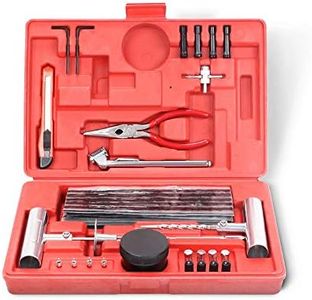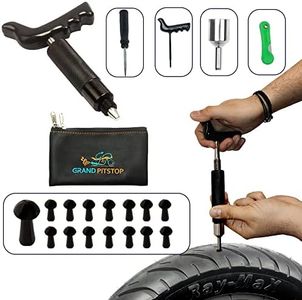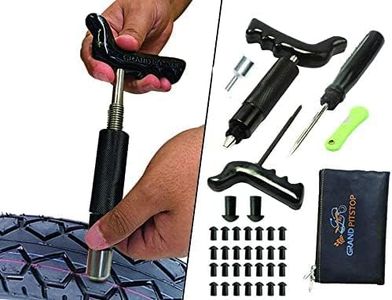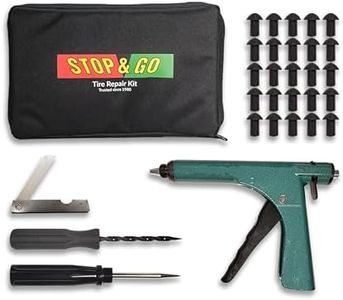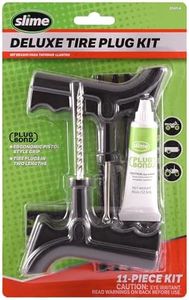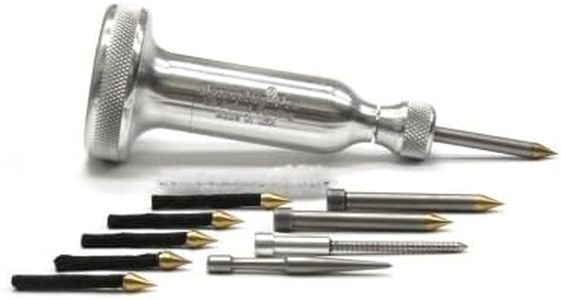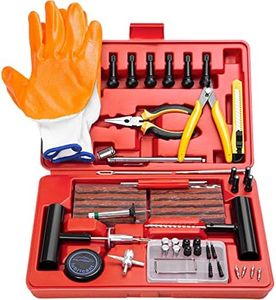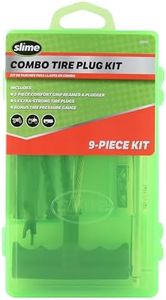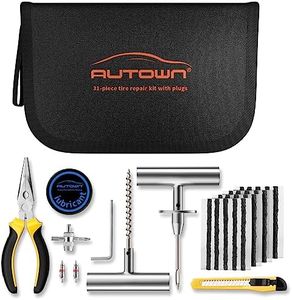We Use CookiesWe use cookies to enhance the security, performance,
functionality and for analytical and promotional activities. By continuing to browse this site you
are agreeing to our privacy policy
10 Best Motorcycle Tire Repair Kit
From leading brands and best sellers available on the web.Buying Guide for the Best Motorcycle Tire Repair Kit
Choosing a motorcycle tire repair kit is all about ensuring you're prepared for emergencies on the road. These kits are designed to help you make a temporary fix if your tire gets punctured, allowing you to continue your journey safely until you can get proper repairs. When picking a kit, it's essential to focus on the type of repairs it can do, the ease of use, and portability so that it matches your riding habits and your bike.Type of Repair (Plug, Patch, or Both)This refers to how the kit seals a puncture—either with plugs, patches, or a combination of both. Plug kits are generally used for tubeless tires and are quick for sealing small holes, letting you get back on the road faster. Patch kits are more involved and are typically used for tube-type tires, offering a more reliable repair but may require removing the tire. Some kits have both options to cover all bases. To pick the right one, consider the type of tire your motorcycle has (tubeless or with tubes) and your comfort level with handling a more detailed repair.
Tools IncludedThis covers what tools are packaged in the kit, such as insertion tools, reamers, valve core tools, pliers, or even mini air compressors. Some kits keep it basic with just the essentials, while others include more tools to handle different types of punctures and repairs. If you want a light and compact kit for short trips, basic tools are often enough. For long journeys or remote travel, having a kit with more comprehensive tools gives extra peace of mind and flexibility.
Inflation MethodAfter repairing a tire, you’ll need to reinflate it. Kits provide options like CO2 cartridges, mini pumps, or simply the repair materials with no inflator at all. CO2 cartridges are very portable and fast but offer limited air—good for quick fixes near civilization. Mini pumps are reusable and reliable for multiple inflations, though they require a bit more effort. If you only ride close to help, you might skip the inflator, but for touring or remote rides, always opt for a kit that lets you reinflate on the go.
Size and PortabilityThis is about how compact and easy to carry the kit is. Smaller kits fit easily under your seat or in a jacket pocket, making them convenient for everyday riding. Larger kits may offer more tools and supplies but are bulkier. Pick a size that fits your bike's storage options and matches how much repair capability you want—urban riders might prefer ultra-compact kits, while those doing long-distance touring should consider full-featured kits.
Ease of Use and InstructionsSome kits are designed for quick, straightforward use and include clear instructions or guides, making them ideal for riders who aren’t experienced in tire repair. Others may assume some knowledge or provide more professional-grade tools. If you’re new to repairs, prioritize kits with user-friendly designs and step-by-step instructions so you’ll feel confident using the kit in an emergency.
Quality of MaterialsThe durability of the tools and repair materials can vary. Higher-quality kits include strong metal tools and long-lasting plugs or patches, which are more likely to work reliably when you need them. Lower-quality kits can have plastic tools or materials that may not hold up as well. If you want peace of mind, especially for long rides, look for kits made with durable materials that can withstand repeated use.
